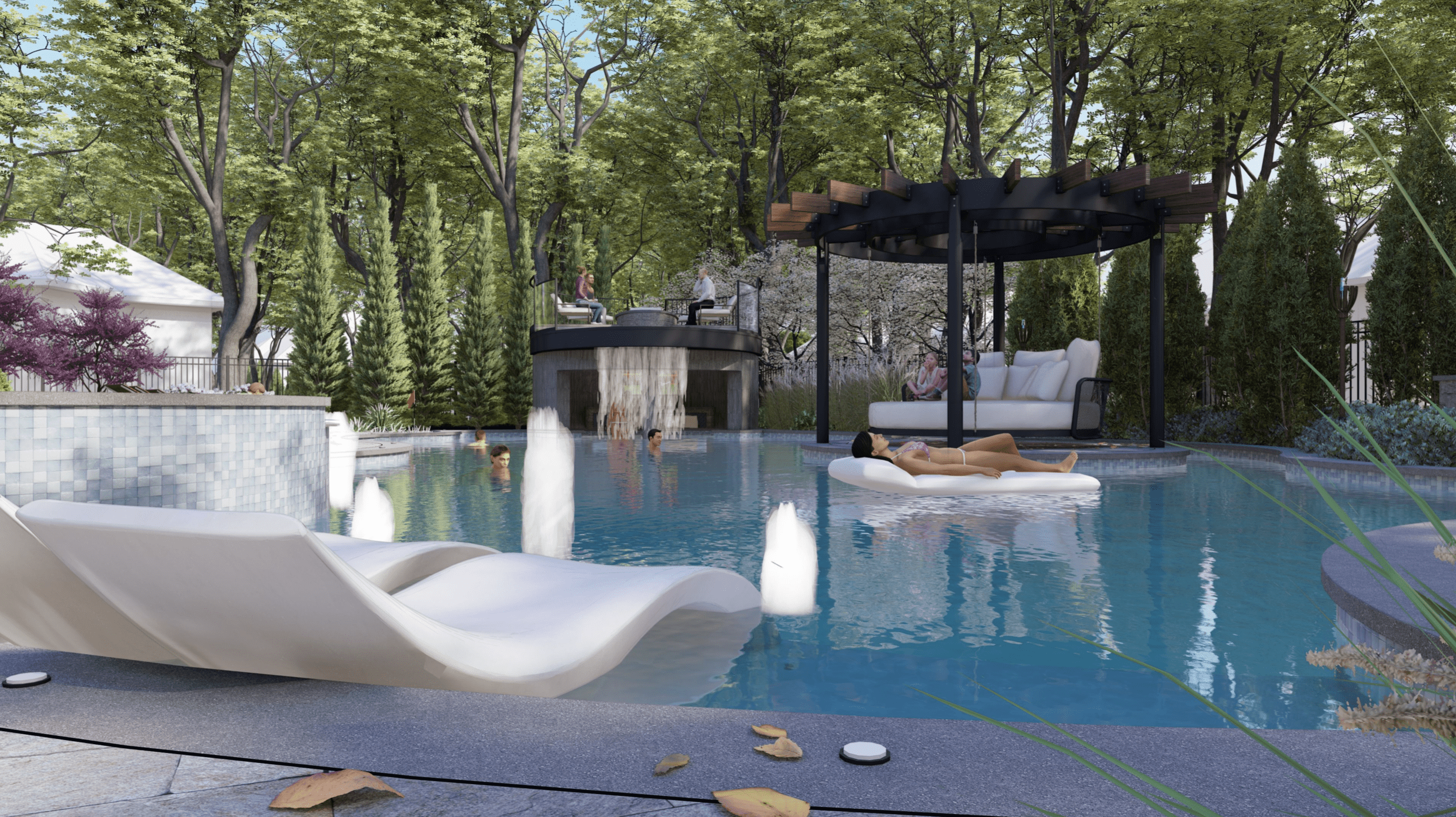
When you’re designing a landscape for your client, it may be easy for you to picture what you have in mind for them. However, your client may have a hard time understanding your vision if you are only using 2D plans.
Utilizing different design software and tools can help bring your project design to life so your clients can visualize and approve your concept.
“2D certainly has its uses in the design process, especially early on, but it’s when we get into 3D that clients start to really respond and get excited,” says Graham Pellettieri, president of Pellettieri Associates, based in Warner, New Hampshire. “There’s no doubt, animated video clips where we fly through their space in virtual reality, or hand them an iPad on their property with the design plans loaded on it and placed in augmented reality so they can walk through the landscape in a mixed-reality setting, are what they respond to the most. These visual tools help the design team and our clients align on a vision together, and significantly help to get the clients understanding the plan to a much deeper level than they would with just a 2D version on paper.”
Utilizing Technology Effectively
No matter what technologies you implement, it is always a good practice to start with a basic 2D concept that the client is on board with before moving into 3D modeling, animations or virtual reality.
Kurt Kraisinger, president and owner of LORAX Design Group, based in Liberty, Missouri, says he prefers to do hand-drawn presentations early on as the design isn’t quite set in stone. Once the client approves the design, they will move into more elaborate renderings, but even in SketchUp they won’t put finishes on materials yet.
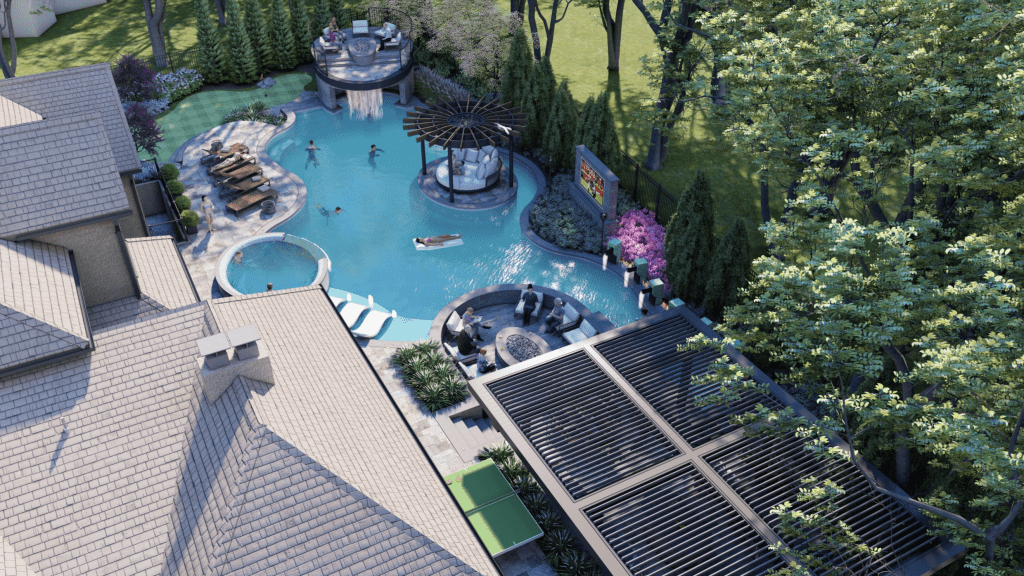
“It’s more about focusing on good principles of design early on when we’re talking about proportion and scale and rhythm and balance,” Kraisinger says. “Those are the type of things that really make a project unique and also make it work.”
He says they don’t want to just create a pretty picture but focus on the fundamentals of design and consider aspects like the flow of the space, the grading and the drainage. By the time they create a 3D video, the changes are minute because the big moves were discussed in the beginning and approved along the way. This prevents them from having to redo a design multiple times.
Scott Bishop, founding principal of Bishop Land Design, based in Quincy, Massachusetts, agrees with this practice. They prefer to have a rough model to convey the client’s wants without spending too much time on a design that might change.
3D Graphics and Animations
Once the design has moved to a later phase, the visualization possibilities depend on the scope, scale and wants of the client. Creating 3D stills, animations, and videos have all become a common expectation for clients.
In 2009, David Fletcher, founding principal of Fletcher Studio, based in San Francisco, California, decided to take this to the next level and started building his designs in video game engines. He says he was inspired after playing video games with environments that were mind-blowingly detailed and beautiful and wanted to know why couldn’t they use them for their projects.
His firm has used video game engines like Infinity Engine, Studio 4D and Unreal Engine in the past. He says the benefits of using a game engine are the file sizes are manageable and it isn’t sluggish.

“It’s a way of expressing very complex worlds and time and light and intangible things that you really can’t get out of a drawing,” Fletcher says.
Now Fletcher Studio uses Lumion, a rendering software built off a video game engine. Similarly, Pellettieri uses TwinMotion to bring things to life with animation and for virtual reality presentations.
“What is fascinating to me is seeing companies like TwinMotion come into the landscape design software space, as they are under the umbrella of Epic Games and the software comes from the gaming industry,” Pellettieri says. “This is a great example of how technology that is developed for one industry can have applications in an entirely different industry if you are willing to explore the innovative possibilities and continue to look ahead to the larger shifts we are seeing with regard to technology adoption in the green industry.”
Bishop also uses Lumion to create live models and he says they can get more specific with their plant material in the rendering.
“I think the vegetation is a thing that has come a long way, certainly in the past 10 to 15 years, about how digitally you can inlay plant material, so that I think is a real benefit,” Bishop says.
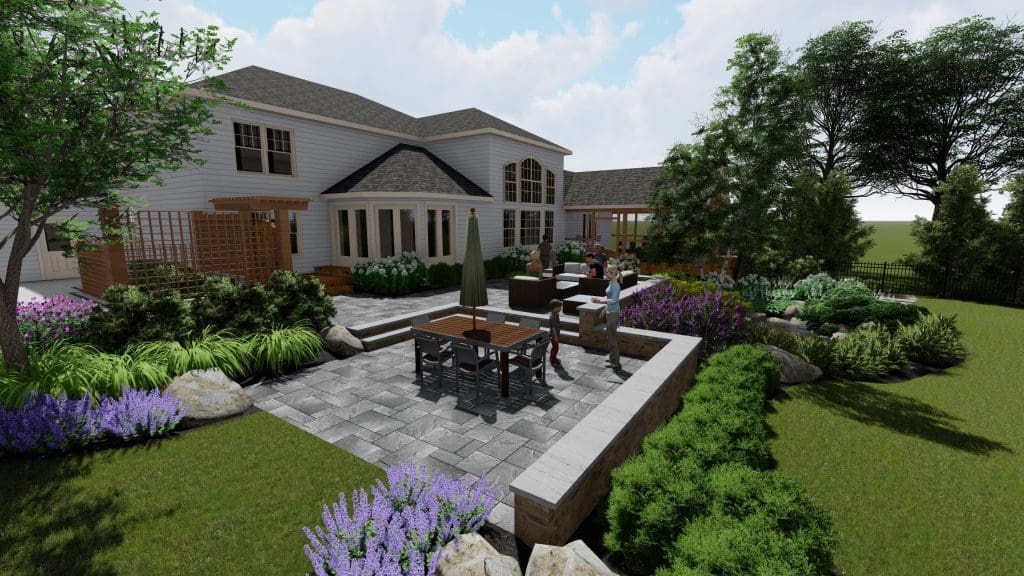
Other common software used to augment designs include SketchUp, Adobe Creative Suite, and Rhino.
Bill Dysert, founder and CEO of Exscape Designs, LLC, based in Novelty, Ohio, notes that you have to be careful with the plant sizing and density of your 3D designs as you can make the landscape look much fuller and more colorful than it will appear when first installed. He says the key is to set expectations early on.
“The upsell opportunity is massive, in terms of adding features like outdoor kitchens and fire pits and night lighting and pergolas,” Dysert says. “There are a lot of different things that once you see it, it’s like, ‘Okay, my budget was X, but now I see that and I see what that adds, and I can visualize how well that would enhance the space.’”
Virtual Reality and Augmented Reality
One step further with 3D designs is presenting them in virtual or augmented reality. Again, whether one or either of these types of technology is a good fit depends on the project and the client’s preferences. Virtual reality (VR) places a client inside a 3D simulation of a landscape design, while augmented reality (AR) projects a 3D image into a real-life setting.
Pellettieri says they’ve been offering VR for about four years and they’ve started to tap into AR within the last year.
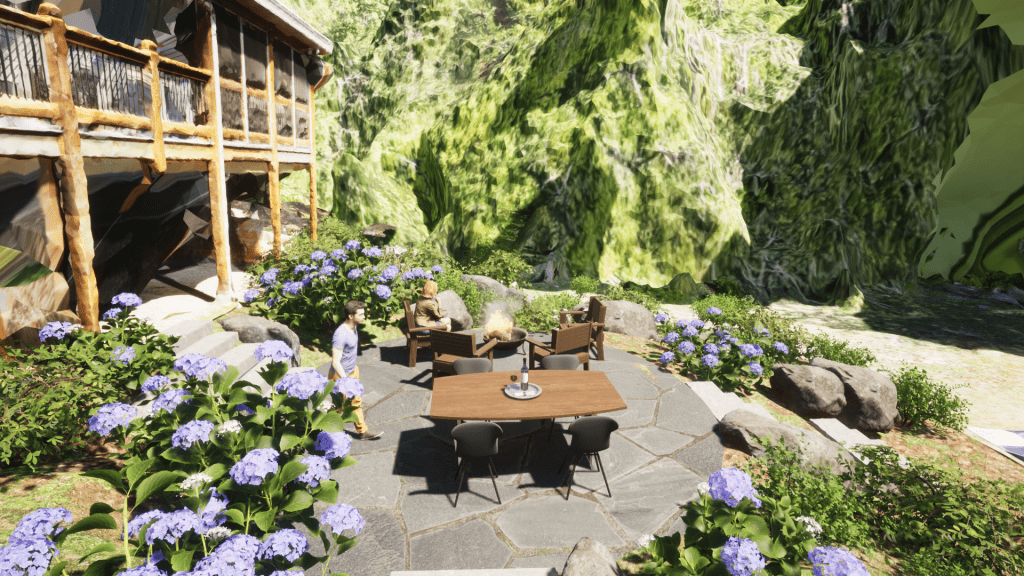
“With virtual reality, it is a really great tool to use, but the challenge is that you have to create everything that’s needed to understand and represent the space you are designing,” Pellettieri says. “That can take up substantial amounts of time, though the flip side is that we find the software intuitive and easy to use. With augmented reality, you can trim that down to only the areas you are designing, and then drop that into the real-world environment so the client has real context. Augmented reality looks to be a more practical and useful solution within our industry long-term, but the technology and tools to integrate it into one’s process are more complex and require greater technical aptitude.”
He says his clients respond well to both VR and AR. With VR, clients can think more objectively about their property, while AR is more subjective and encourages them to engage with the space by walking through it. He says large-scale projects like a college campus or multi-acre residential property are more easily navigated in VR, while a smaller space with a pergola and pool is a better fit for AR.
“In some cases, it can be helpful to have a blend of both,” he says. “VR model for the large overview of the property, and AR to walk through some of the more critical smaller areas.”
Pellettieri adds that the goggles used for an immersive VR experience can make people disoriented and his clients prefer to view the material on a tablet or a screen.
Bishop says his clients’ interest in VR often depends on their tech savviness. Dysert says they have dabbled with virtual reality at their company, and it can blow some clients’ minds.
“While it’s a great concept, I think it sort of takes away from the overall relationship-building experience being able to get the cues from their response to it,” Dysert says. “The nonverbal communication side of things that exist in all conversations and relationships.”
3D Printing
For clients who are more tactile, 3D printing a model of the project is another option. Bishop, Fletcher and Kraisinger all offer 3D printing to their clients.
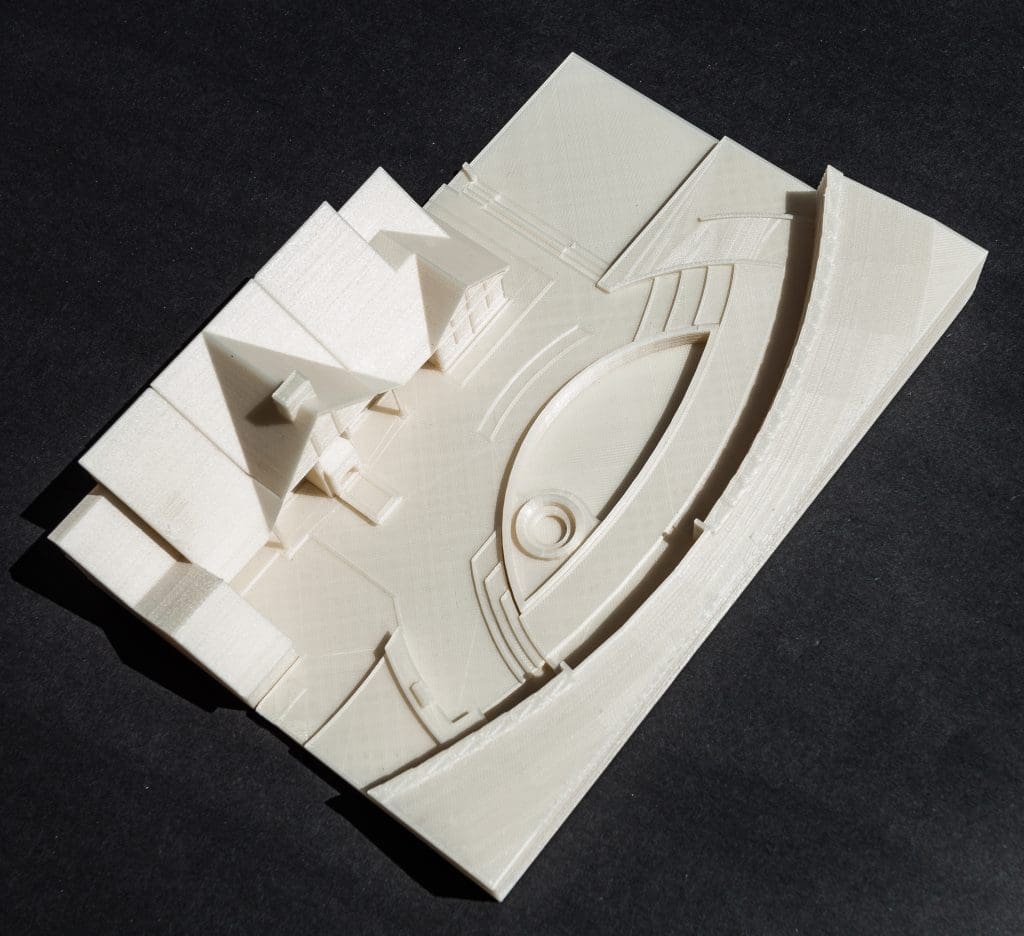
Fletcher says most don’t even know it’s an option to ask for. He says being able to print out a large site and have people hold it in their hands can be pretty powerful in terms of accelerating decision-making.
Kraisinger says he first got the idea to start offering 3D printed models after seeing one sitting on an architect’s desk and it reminded him of Christmas Vacation’s Clark Griswold playing with a model of a swimming pool he was having installed. Many of Kraisinger’s high-end clientele want something tactile they can sit on their desk or show their friends or colleagues when they come over to the house.
“It’s a really good way to communicate,” Bishop says. “I think certain clients, like municipal clients, for sure. We usually give the model to them and they hold on to it for a year. They can talk to somebody about it. They don’t need all the equipment. They don’t need to make a presentation; they can just have something on their desk and have it talk for other people. Maybe it’s folks that they’re cultivating for donations. Maybe it’s folks that we’re trying to get grants from, but it’s a really good way for tabletop communication.”
Drones
Another tool that can speed up your design process is the use of drones. While they are known for their capabilities to capture a bird’s eye view of a property, they can also create 2D maps, 3D models of properties, evaluate plant health with multi-spectral and thermal sensors, or map complex terrain and tree canopies with LIDAR.
Pellettieri says utilizing drones has transformed their design process and jumpstarts the entire operation.

“Instead of waiting weeks or months for a land surveyor to go out and survey the site, we go out and fly it in a few hours ourselves, and have drone data available to use as a base within a day or two,” he says. “In some ways, it has expanded our design services to integrate and focus on areas we were not paying as much attention to before (for example, size and shape of tree canopies, characteristics of neighboring properties, and long-range view zone potential). In that regard, it has actually expanded the scope of services and considerations we’re able to provide to a client, and in some cases increases the amount of billable time we spend on a design project overall.”
He says they’re up and running with design concepts much faster with this approach. He says the drone data has also saved them from having to make a site visit in the field because they can open the drone model and get their answer almost immediately.
“Flying a property and having referenceable data within a couple of hours is a powerful tool that can greatly reduce the need for future visits to a property,” says CeLynn Siemons, media specialist for Pellettieri Associates, who is also an FAA-certified drone pilot. “Models can be shared internally with staff so those who have not visited the property can still have a solid understanding of the site conditions. With our drones, we are able to determine existing forestry and plant health, terrain elevations, and overlay property boundaries, setbacks, and more on the drone data in post-production. These are all essential factors to take into consideration before starting on a landscape design concept. Having this wide range of information to refer back to is well worth the innovative investment.”
Making the most of drone data does call for a fair amount of technical hardware and software. Pellettieri says third-party software like Drone Deploy, Pix4D, StructionSite and Droneify are key for post-production work.
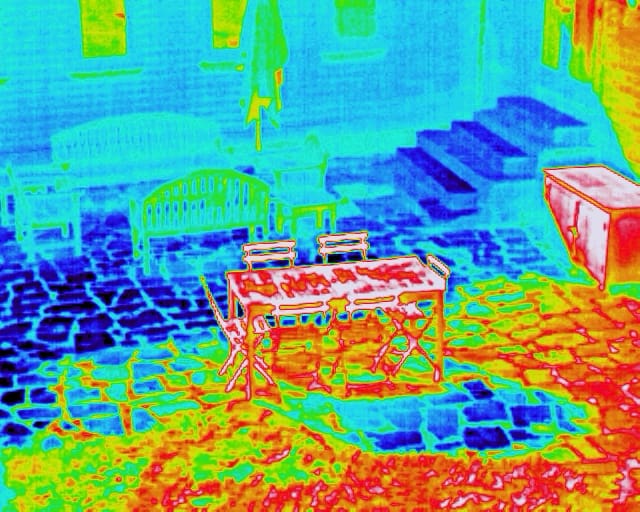
“We use DroneDeploy software in our business and fly DJI and Skydio drones for hardware,” he says. “It’s also important to note that to fly drones commercially, your pilot(s) will need to be FAA-certified (Part 107) and comply with the growing list of regulations, and the drones will need to be registered with the FAA.”
For those thinking Google Earth is just as good as drone imagery, Pellettieri says the level of detail is significantly different. Siemons adds that Google Maps images are generally one to three years old.
“Often working on new home builds or houses that are undergoing renovations means the existing site conditions can be drastically different than what you see on Google Maps,” Siemons says. “A 2D map is just scratching the surface of our drone’s abilities. We can pull site elevation information, determine hot spots on the property, pinpoint trees in declining health, and even 3D model unique features to provide accurate measurements and location information. Performing flights during different seasons also allows us to draw comparisons between seasonal view potential or evergreen versus deciduous cover.”
Fletcher agrees the usage of drones is extremely powerful and it’s revolutionized his way of thinking on how they do their work. The only drawback is they don’t have enough pilots to take advantage of it regularly.
AI and Future Technology
Dystert and Fletcher are both interested to see how AI with influence the industry in the future. Bishop believes there are certain aspects that are easy for a computer to take on, but as design professionals, they are still the ones designing for people.
“I would say creativity is a really hard thing for computers to learn, especially when computers designing for humans is a kind of a backwards process,” Bishop says.
Kraisinger agrees that there’s no one piece of software out there that can do everything for you and human interaction with the client is what helps get the project across the finish line.
“One has to be a good storyteller,” Kraisinger says. “I think when you’re a designer, you have to be able to walk someone through a space visually. I think sometimes the best designers are people that don’t even really need to plan at all or any visual graphic. They could really just walk someone through a space, but just tell them a story like, ‘Hey, this is what we visualize for your project.’”

Kraisinger argues that verbal communication is just as important as strong visuals in a landscape design.
“I think that’s what a lot of people forget about,” Kraisinger says. “They always want to go to the tactile things that we know like pen and paper, computers or 3D graphics or physical models, and those are all helpful, but at the end of the day, if you have those tools and you’re not able to verbally walk through it then ultimately I think it’s a swing and a miss.”
When it comes to finding new technology that can be integrated, Kraisinger encourages getting out of your bubble. While you have a process that works, you still have to inject new things every so often to make your job more efficient because technology is just another tool.
“Find the tools that work for you, make you more efficient, or help you better communicate to your clients,” Bishop says. “Those are really the sweet spots. What’s going to make you more creative or be able to have you convey something at a speed by which you can continue on the design process profitably.”
Fletcher adds that it is best to look at it as research when trying out new technology. Pellettieri acknowledges the opportunities for innovation can be overwhelming, so consider what bottlenecks and pain points you have with your design workflows.
“You will likely experience successes and failures along the way, but the most important part is to stay nimble and be an agent of change,” Pellettieri says. “There’s an old proverb that we should all keep in mind when thinking about technological innovation as a whole; ‘Nothing ventured, nothing gained!’”
This article was published in the July/August issue of the magazine. To read more stories from The Edge magazine, click here to subscribe to the digital edition.

